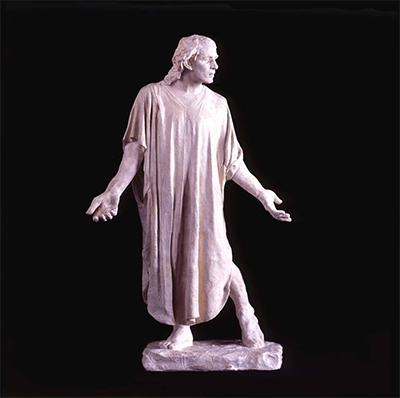Jean de Fiennes is a figure crafted by the French artist Auguste Rodin. It is one of the six sculptures that comprise the artist’s famous sculptural group: The Burghers of Calais.
In 1347, the Hundred Years War was raging between France and England. The town of Calais was besieged by the forces of Edward III, the English king at the time of the war. After a long and bitter resistance, the town was forced to surrender. Edward agreed to spare the city on condition that six of the town's most prominent citizens would leave their hometown. The six volunteers agreed to meet their fate to save the townsfolk. However, the men were spared by Philippa of Hainault, the Queen of England, who was moved by their bravery. In September 1884, Rodin was approached by the mayor of Calais, M. Omer Dewavrin with a proposal to erect a monument to celebrate the citizen’s act of heroism during the war.
Rodin accepted the proposal and completed a maquette for the monument in November 1884 but delivered the finished work a decade later, in 1895. While Rodin had agreed to produce only one of the burghers – the eldest burgher and the first to volunteer, Eustache de Saint Pierre, he crafted all six burghers. And instead of showing the volunteers as they confronted the king, as was customary in earlier depiction of the event, the French artist captured the moment when they were walking to the English camp.
Jean de Fiennes was the youngest of the burghers so Rodin crafted him with long, wavy hair and a youthful body. His figure is slender and unadorned and he steps forward with his head, torso, and foot slightly turning to the right. The facial expression, and overall posture represent that of a person confronted by a looming destiny. Due to the sculpture's success, 12 cast bronze versions were produced. The monumental versions can be admired in twelve cities around the globe including Calais, San Francisco at the Legion of Honour Museum, London, D.C., Tokyo and Paris.




